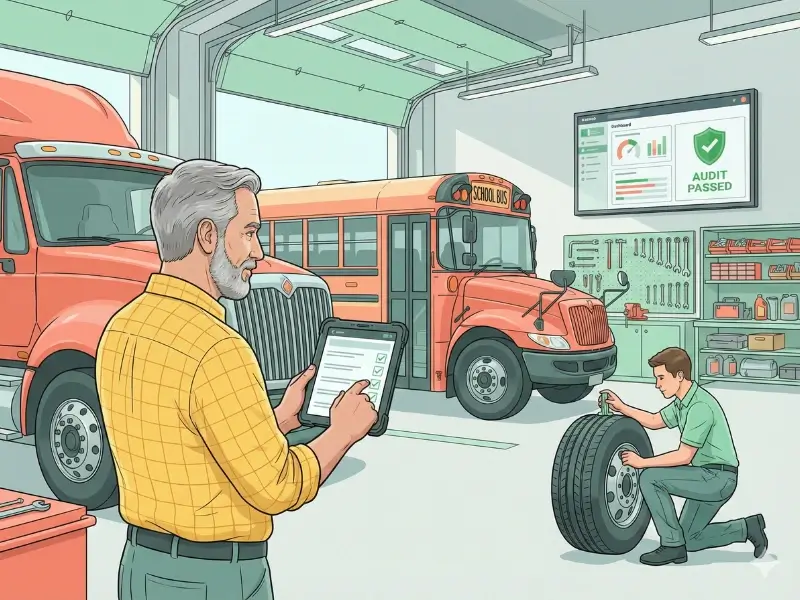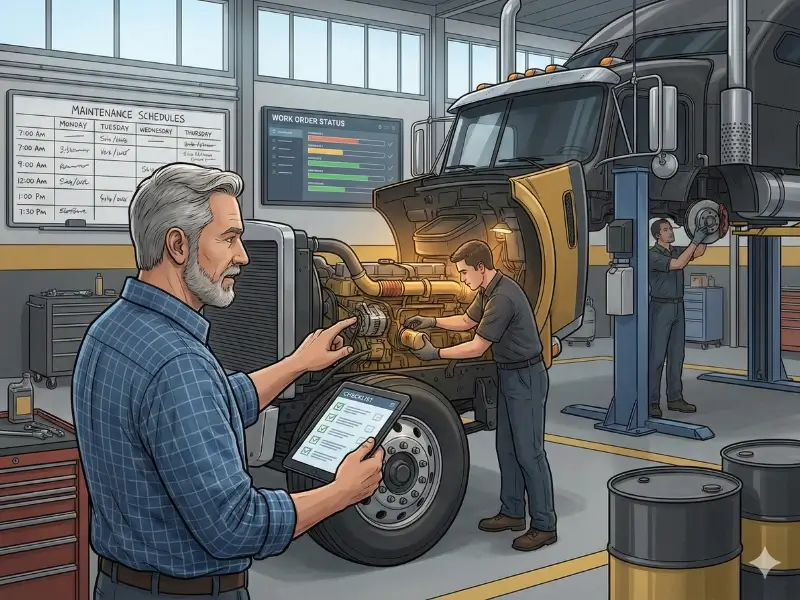Key Takeaways
The trucking industry is the backbone of the global supply chain, ensuring that goods are transported efficiently from point A to point B. However, the safety of truck
drivers and other road users is paramount.
One of the critical regulations governing the trucking industry is the Hours of Service (HOS) rules. These regulations are designed to prevent driver fatigue, a leading
cause of accidents involving commercial vehicles.
In this article, we'll delve into what HOS is in trucking, its importance, the rules, and how they impact the industry.
Understanding Hours of Service Regulations
Hours of Service (HOS) regulations are rules set by the Federal Motor Carrier Safety Administration (FMCSA) in the United States to govern the working hours of anyone
operating a commercial motor vehicle (CMV).
These rules specify the maximum number of hours a driver can work and drive, as well as the required rest periods. The primary goal of HOS regulations is to ensure that
drivers are well-rested and alert while on the road, thereby reducing the risk of fatigue-related accidents.
The Importance of HOS Regulations
Fatigue is a significant factor in many trucking accidents. When drivers are tired, their reaction times are slower, and their decision-making abilities are impaired. This can
lead to catastrophic consequences, not just for the truck driver but also for other road users.
By regulating the number of hours a driver can work and ensuring they take adequate rest, HOS regulations aim to reduce the likelihood of fatigue-related incidents.
Key Components of HOS Regulations
The HOS regulations are comprehensive and cover several aspects of a truck driver's work schedule. Some of the key components include:
1. 14-Hour Driving Window:
This rule allows drivers to be on duty for a maximum of 14 consecutive hours. Within this window, drivers can drive for up to 11 hours, after which they must take a 10-
hour break. The 14-hour window starts when the driver begins any kind of work, not just driving.
2. 11-Hour Driving Limit:
Within the 14-hour window, drivers are allowed to drive for up to 11 hours. Once they reach this limit, they must take a 10-hour off-duty break before driving again.
3. 30-Minute Break Requirement:
Drivers must take a 30-minute break if they have been driving for 8 consecutive hours without at least a 30-minute interruption.
4. 60/70-Hour Duty Limit:
This rule limits the total number of hours a driver can be on duty in a 7-day or 8-day period. Drivers are allowed to be on duty for up to 60 hours in a 7-day period or 70
hours in an 8-day period.
5. 34-Hour Restart:
This provision allows drivers to reset their 60/70-hour clock by taking a 34-consecutive-hour off-duty break.
Exceptions and Exemptions of HOS Regulations
There are several exceptions and exemptions to the HOS laws and rules, designed to accommodate different types of driving and industry-specific needs. Some of these include:
- Short-Haul Exception: Drivers operating within a 150-air-mile radius and who return to their starting point within 12 hours are exempt from certain HOS requirements.
- Adverse Driving Conditions Exception: This allows drivers to extend their driving window by up to 2 hours in case of unforeseen adverse driving conditions.
- Agricultural Exemption: During planting and harvesting seasons, drivers transporting agricultural commodities within a 150-air-mile radius are exempt from HOS regulations.
Electronic Logging Devices (ELDs)
To ensure compliance with HOS regulations, the FMCSA requires most commercial trucks to be equipped with Electronic Logging Devices (ELDs). These devices
automatically record driving time, making it easier to track and enforce HOS rules.
ELDs help reduce the chances of drivers falsifying their logs and ensure more accurate record-keeping.
Download Our Free Truck Maintenance Resources Now!
Impact on the Trucking Industry
While HOS regulations are important for safety, they also have a significant impact on the trucking industry. Compliance with these rules can affect scheduling, route
planning, and overall operational efficiency.
Trucking companies and drivers must carefully manage their time to adhere to the regulations while still meeting delivery deadlines.
Final Words
Hours of Service regulations are a vital component of the trucking industry, designed to promote safety by preventing driver fatigue. Understanding and complying with
these rules is essential for truck drivers and companies to ensure not only their safety but also the safety of other road users.
As the industry continues to evolve, so too will the regulations, with ongoing efforts to find the right balance between safety and efficiency.



.png)








.png)


.png)



.avif)

.webp)



